What is a layout for porcelain or natural stone tiles?
A layout for porcelain or natural stone tiles is a detailed plan that outlines the positioning, design, and pattern of tiles before they are installed. It acts as a roadmap for tilers, interior designers, and contractors, ensuring that every tile is placed precisely and efficiently. This layout includes measurements, tile orientations, grout line placements, and other essential details to achieve a seamless finish and ensure key set out points are decided and agreed upon before starting.
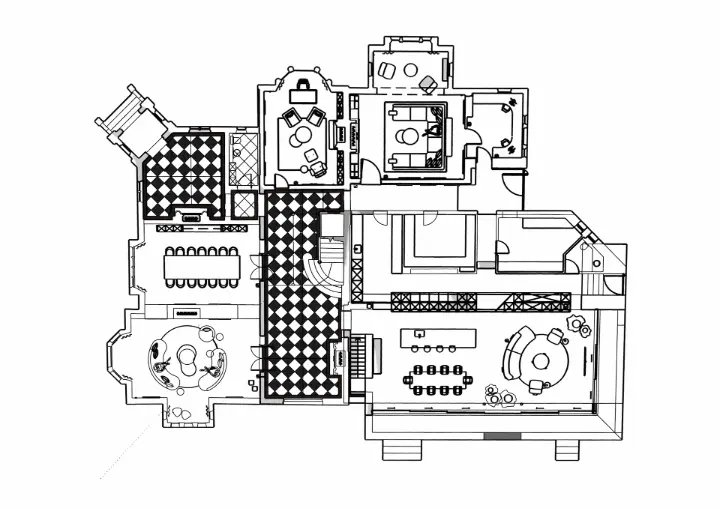
Why is a Tile Layout Important?
A well-planned tile layout plays a crucial role in streamlining and perfecting a tiling project. Here’s why:
- Enhances Precision - A layout eliminates guesswork and reduces errors, ensuring tiles are cut and placed accurately.
- Saves Time - Having a plan speeds up installation by providing a clear guide, reducing the need for adjustments and rework.
- Minimizes Waste - Proper planning helps optimize tile usage, reducing material wastage, reworks and saving costs.
- Ensures Aesthetic Appeal - A structured layout helps achieve symmetry and alignment, contributing to a pleasing and professional look.
- Improves Workflow Coordination - Contractors and designers can work more efficiently when they have a clear blueprint to follow.
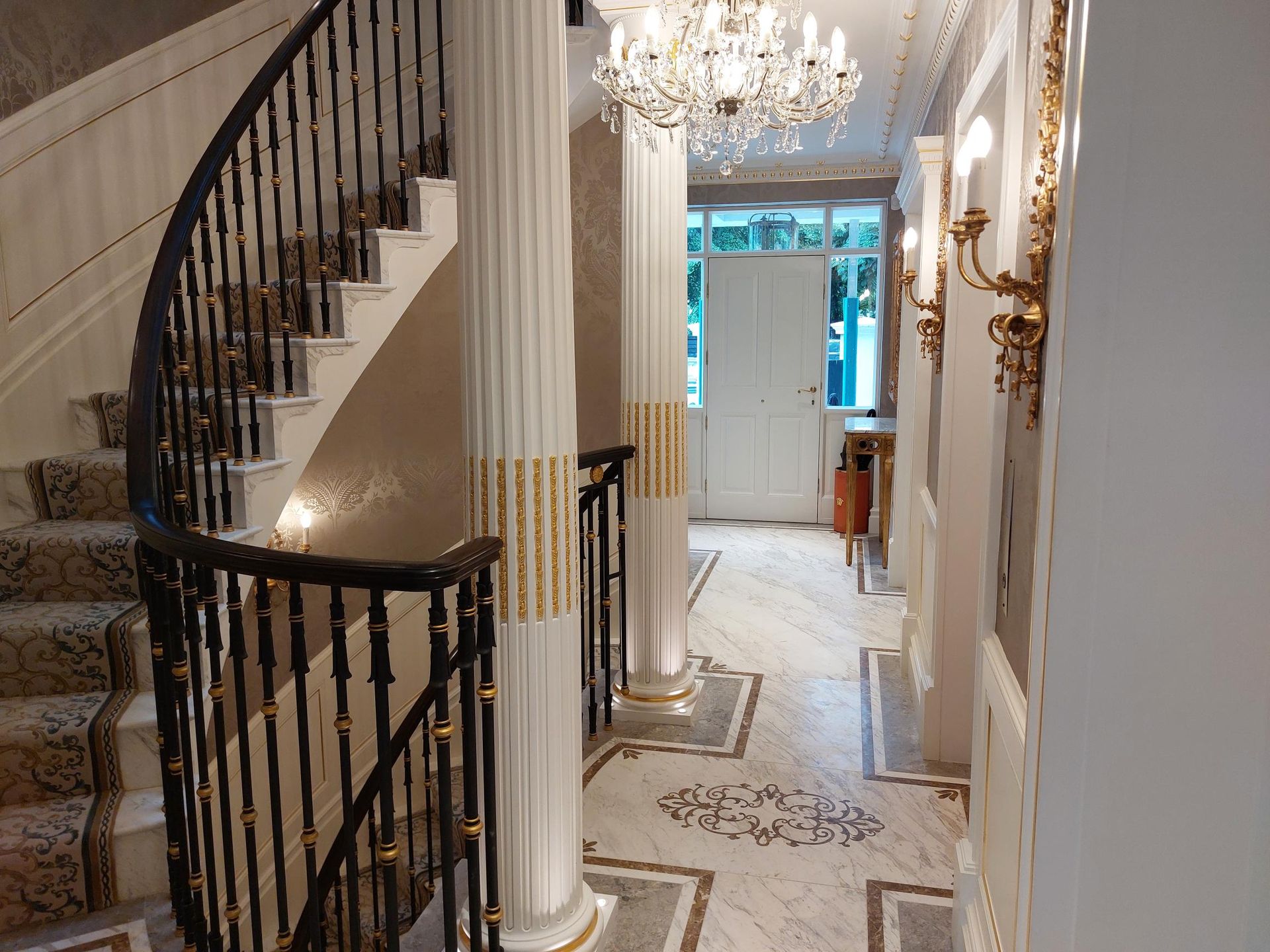
How a Tile Layout Benefits Tilers, Interior Designers, and Contractors
A properly designed tile layout is beneficial across different professions:
- Tilers benefit from reduced rework (for instance if the tile joints need to line up with the shower valve it is critical that the plumbing is set out early in the project) resulting in a faster and more efficient installation process.
- Interior Designers can ensure that their preferred joint/key set-out points are thought through and agreed upon early. Furthermore, the overall design vision enhances the aesthetic value of the space.
- Contractors find it easier to manage material costs, labour schedules, and project timelines when a detailed plan is in place.

Other Advantages and Benefits of Having a Tile Layout
- Avoids Unnecessary Tile Cuts - Reduces irregular or awkward tile cuts, making the design more visually appealing.
- Facilitates Better Planning for Expansion Joints - Helps in strategically placing joints to prevent cracks or misalignment.
- Aids in Material Estimation - Provides an accurate estimate of tiles, adhesives, and grout required for the project.
- Reduces Installation Mistakes - Identifies potential design flaws before installation, avoiding costly errors.
- Improves Durability and Longevity - Proper alignment and spacing contribute to the durability of the floor.
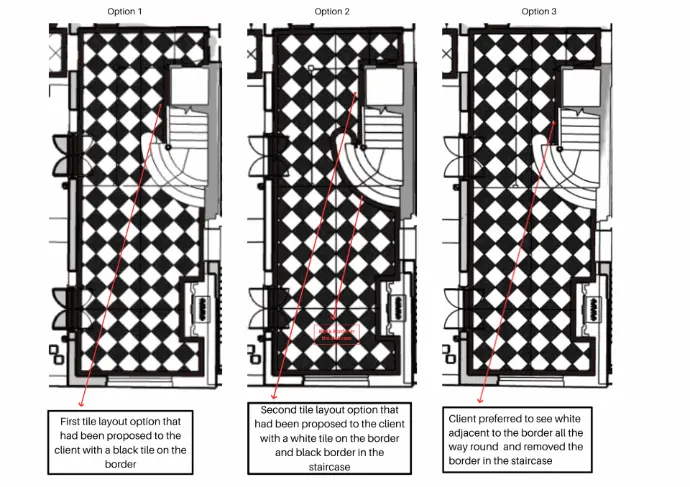
Skills required for creating a tile layout
To create an effective tile layout, professionals need specific skills:
- Mathematical Accuracy – Ability to measure and calculate tile placement.
- Attention to Detail – Ensuring symmetry and alignment in the layout.
- Technical Drawing Skills – Using software or manual drafting techniques to create plans.
- Knowledge of Tiling Materials – Understanding tile types, grout spacing, and adhesive selection.
- Problem-Solving Abilities – Identifying potential installation challenges and finding solutions beforehand.
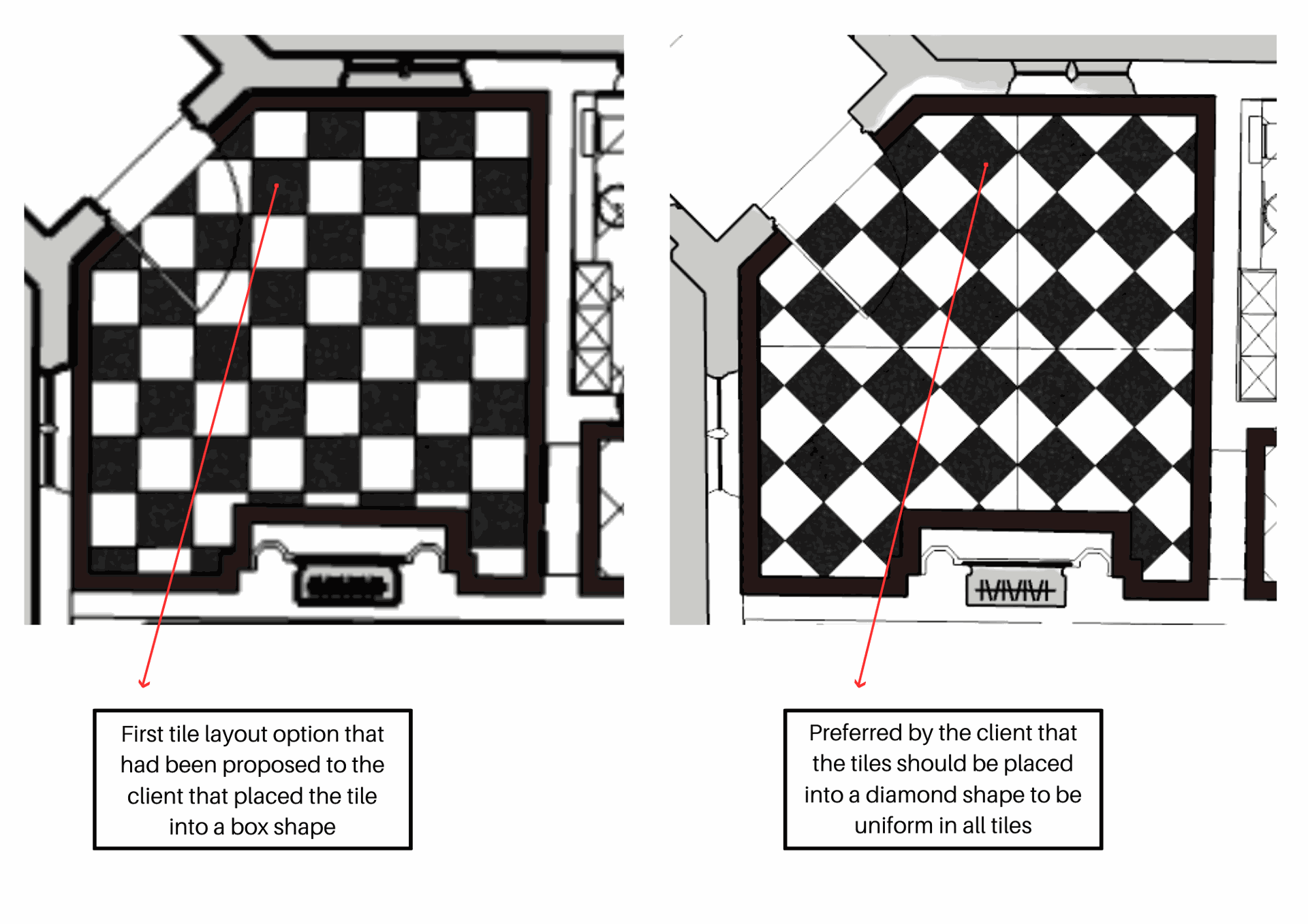
Things to consider when creating a tile layout
- Room Measurements - Accurate room dimensions and the walls need to be all square with each other. This is crucial to check for a precise layout.
- Tile Size and Pattern - The choice of tile size and design affects the overall look and ease of installation.
- Starting Point - Deciding on the focal point of the room helps ensure a balanced tile arrangement.
- Grout Line Placement - Proper spacing between tiles enhances both aesthetics and durability.
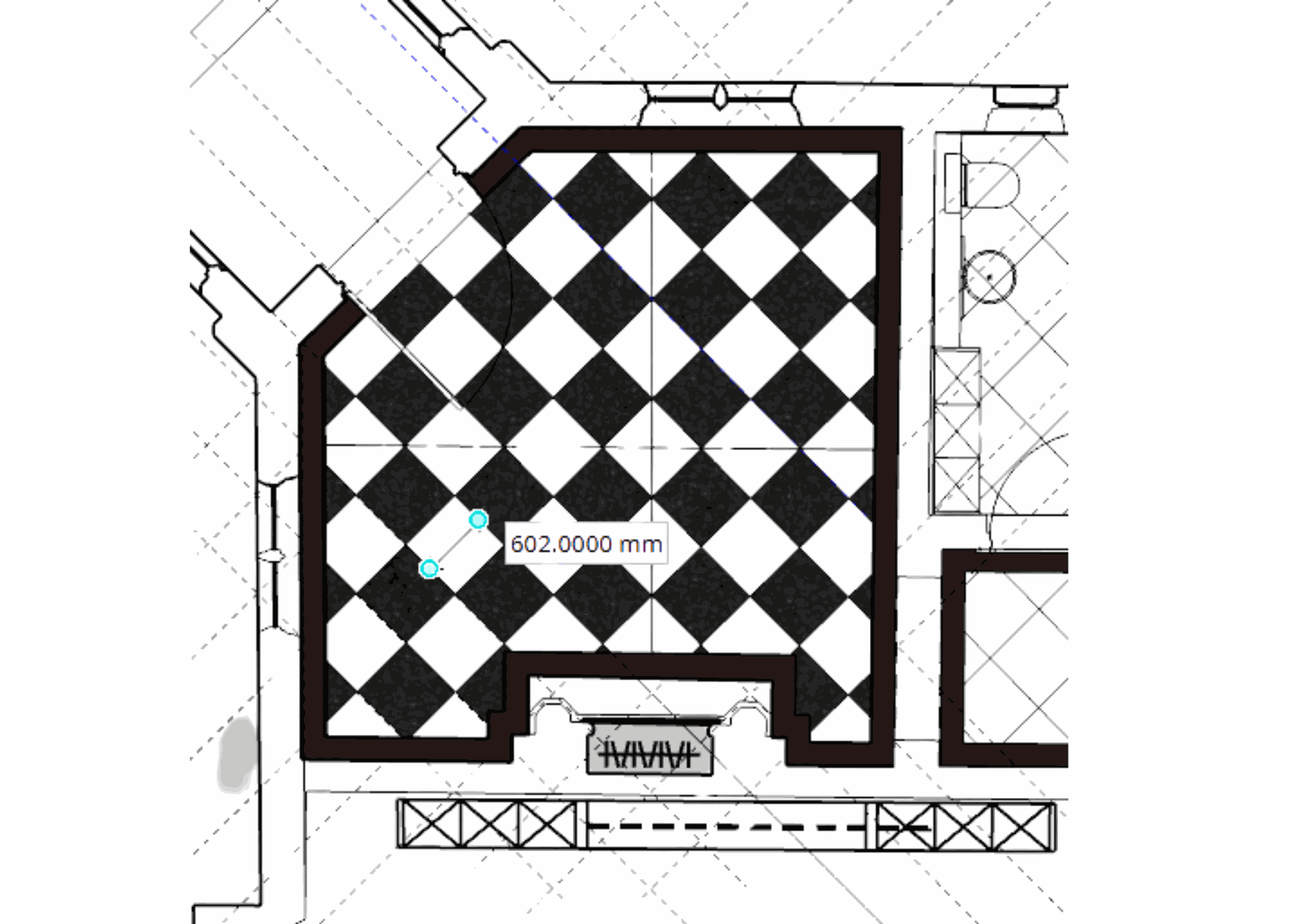
Conclusion
A layout for porcelain and natural tiles is essential for achieving a flawless and efficient installation. It enhances precision, speeds up the project timeline, reduces material wastage, and ensures a visually appealing result. Whether you are a tiler, interior designer, or contractor, investing time in creating a detailed tile layout can significantly improve the quality and efficiency of your work. By considering measurements, tile orientation, and key planning factors, you can achieve a professional and long-lasting finish that meets both functional and aesthetic needs.
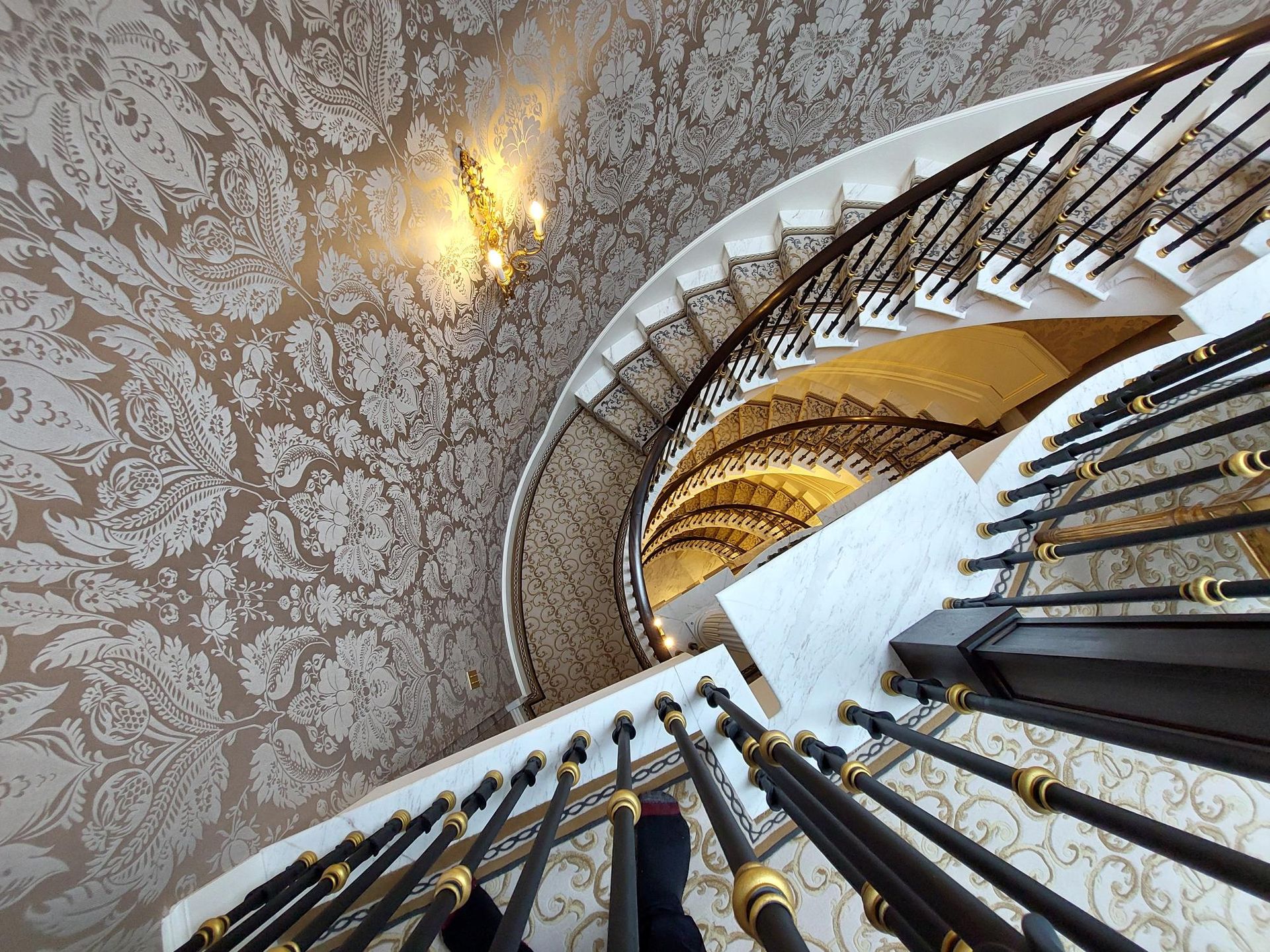
Why is a Tile Layout Important?